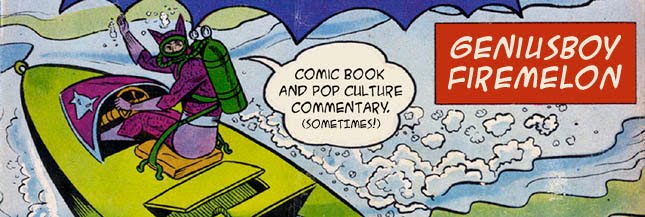Giffen talked about how he never outlines or thumbnails what he's drawing, and on OMAC, he would take Dan DiDio's plot and then, he says...
I would go through the book, and, up front, I would do the panels that I don’t want staring at me when the deadline’s tight. I call them the ‘kitchen sink’ panels, the two-page spreads, whatever. Get that out of the way. So I work out of order now, but I still don’t outline. I’ll have page 14, and page 18, and page 20, and now it’s time to put them together.So, without knowing what he's actually going to draw on pages 1-13, 15-17, and 19, he drew the other pages based on where he thought the big images should go. Then he filled the rest in, almost improvisationally, following DiDio's plot, unless he decided to throw something else in for fun, like when Superman appeared, just because Giffen thought he should pop into the story.
It keeps it spontaneous with me, because I can surprise myself. And I like to think it translates to the work and keeps it spontaneous for the reader, and they’re never quite sure what’s going to happen next.OMAC's long gone as a New 52 series from DC. But it was fun while it lasted, and Giffen's energetic improvisation was the major part of its charm.


No comments:
Post a Comment